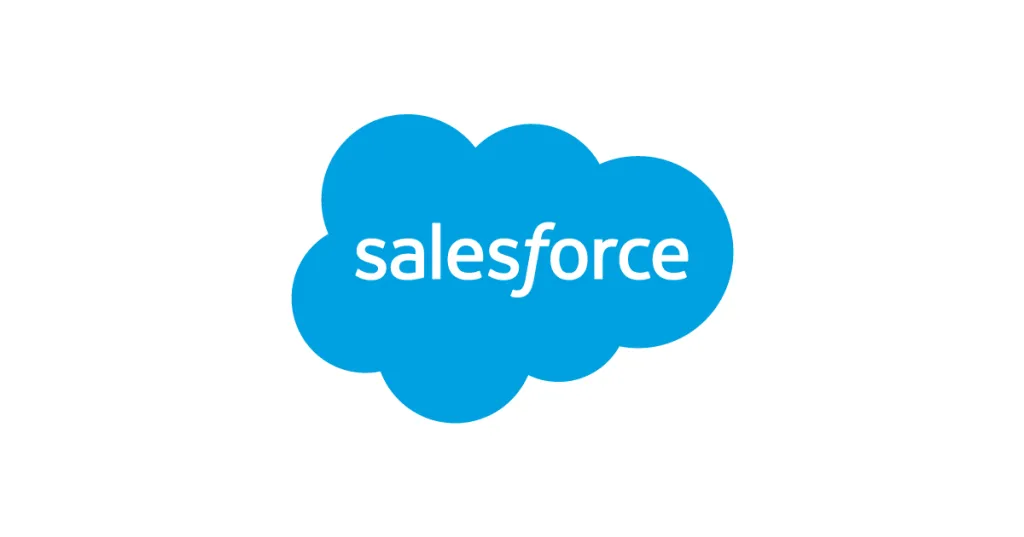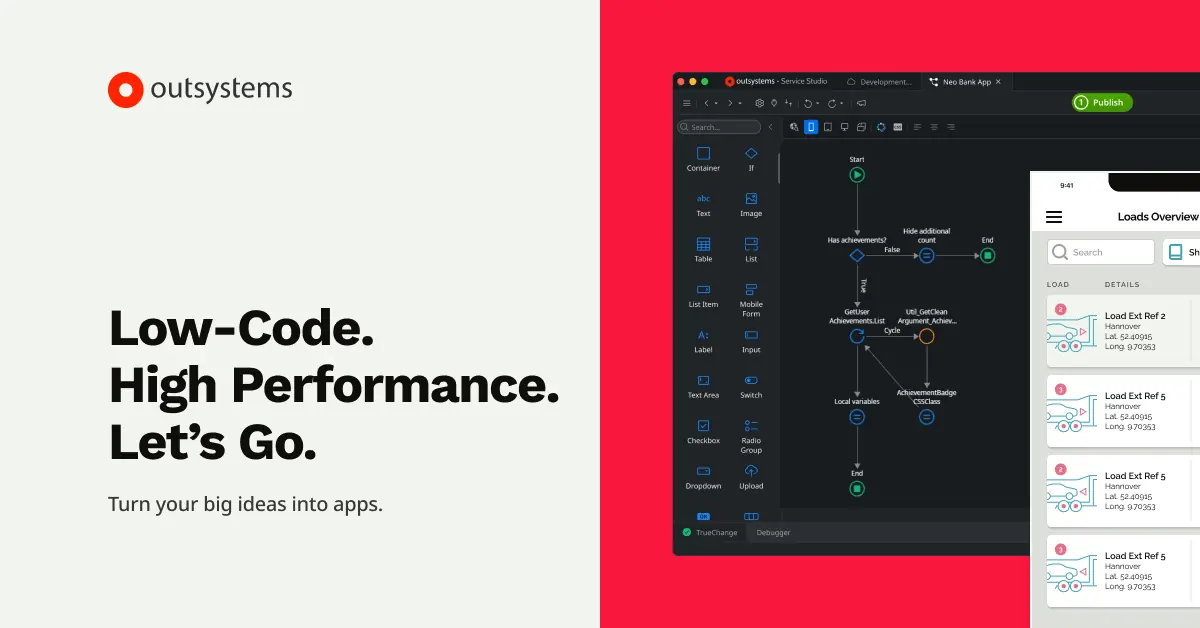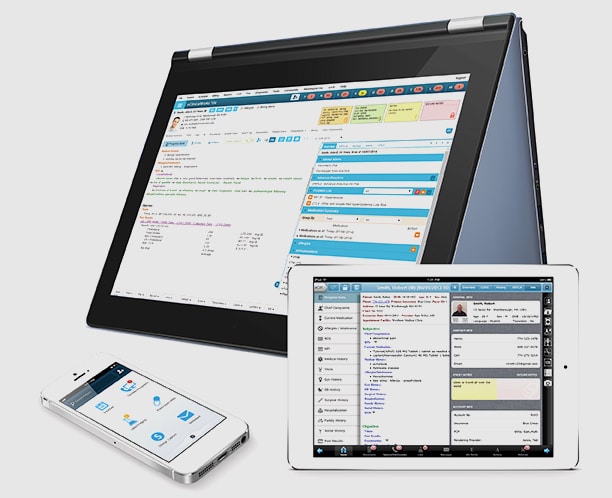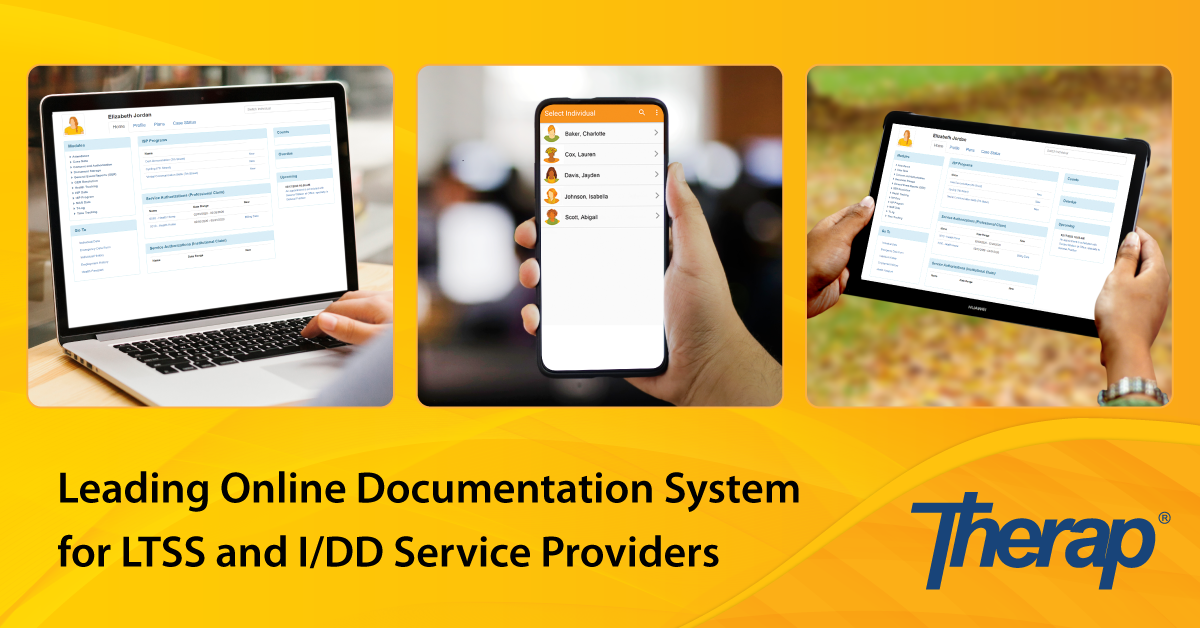Introduction
As the senior living industry continues to evolve amid rising expectations, tighter regulations and shortage of caregivers, leveraging the right technology has become critical for communities to deliver quality care, optimize operations and create meaningful resident experiences. This has led to a proliferation of assisted living software tailored for the unique needs of senior living. In this blog post, we evaluate 15 top assisted living software providers based on key criteria to help communities select the optimal solution.
Methods of Evaluation
The assisted living software providers are evaluated based on the following conventional criteria – features and modules, pricing and plans, ease of use, customer reviews and support. In addition, we also consider modern metrics like number of backlinks, organic traffic and keyword search trends to understand the market presence, mindshare and popularity of these companies. This holistic evaluation approach helps gain a well-rounded perspective on how effective these solutions might be in optimizing operations and experiences for senior living communities.
1. Salesforce Health Cloud
Salesforce Health Cloud is a cloud-based customer relationship management (CRM) platform designed specifically for healthcare and life sciences organizations. It allows users to gain a 360-degree view of patients and their entire health journey across multiple systems. Some key capabilities include patient engagement tools, population health management, billing and claims management.
Pros: Some key advantages of Salesforce Health Cloud include:
– It is built on the #1 CRM platform used across many industries providing stable, robust and scalable infrastructure
– Wide range of out-of-the-box tools and capabilities tailored for healthcare workflows
– Large healthcare partner ecosystem for customization, integration and additional functionality
Cons: A potential disadvantage is the cost as it requires a subscription licensing model which can be expensive for larger deployments
Pricing: Salesforce Health Cloud pricing starts at $150/user per month for the Professional Edition and goes up based on additional features, functionality, data storage, usage and professional services required for implementation and customization.
Some key stats about Salesforce Health Cloud include:
– Used by over 350,000 healthcare professionals worldwide
– Integrates with over 1,000 healthcare data sources via APIs
– Processes over 1.4 billion healthcare transactions per year
2. Medtronic
Medtronic is a global leader in medical technology, services, and solutions. They are focused on addressing the biggest healthcare challenges through collaboration. Their assisted living software, CareCast, is a comprehensive electronic health record (EHR) system specifically designed to meet the clinical, regulatory and operational needs of skilled nursing facilities and other senior living communities.
Pros: Some key advantages of CareCast include:
– Designed specifically for the skilled nursing workflow reducing time spent documenting
– Tight integration with other Medtronic solutions improves care coordination and reduces burden on staff
– Comprehensive clinical tools support all aspects of care from admission to discharge planning
Cons: A potential disadvantage is that as a more full featured EHR system, there may be a larger learning curve for staff compared to some more basic documentation focused solutions.
Pricing: Pricing for CareCast is not publicly listed but is typically sold as a monthly subscription based on facility size and features. Implementation, training and support services are also available as add ons to the monthly subscription.
Some key stats about CareCast include:
– Used in over 5,000 facilities nationwide
– Integrates with over 50 different therapy, pharmacy and medical equipment vendors
– Clinical documentation tools support over 30 different reimbursement models
3. OutSystems
OutSystems is a leading low-code application development platform for building custom software solutions. Founded in 2001, OutSystems has its headquarters in Portugal and the United States. With over 1,500 employees worldwide, OutSystems is used by organizations of all sizes across various industries to develop and deploy applications quickly.
Pros: Some key advantages of the OutSystems platform include:
– Low-code visual development that allows both technical and non-technical users to build apps quickly
– Integration capabilities to connect disparate legacy systems
– Highly scalable, feature-rich platform suited for complex enterprise applications
– Robust set of pre-built components and templates to accelerate app development
– Continuous updates and innovations released regularly
Cons: A potential disadvantage is that the platform has a learning curve to take full advantage of its capabilities. Developers used to traditional coding may find the visual low-code approach takes some adjustment.
Pricing: OutSystems pricing is based on the number of licensed developers. It offers monthly or annual subscriptions starting at $150 per month for 1 developer. Enterprise plans with unlimited developers are available starting at $3,000 per month.
Some key stats about OutSystems include:
– Used by over 1,000 enterprise customers worldwide including names like ANZ Bank, Cisco, ING and HP
– Over 1 billion app downloads from the OutSystems marketplace
– Recognized as a leader in the Gartner Magic Quadrant for Multiexperience Development Platforms
– Named a leader in the Forrester Wave for Low-Code Development Platforms
4. Epic
Epic is a leading EHR and population health management software provider. Founded in 1979, Epic develops integrated software solutions that support the entire healthcare continuum. With customers ranging from large academic medical centers to community health organizations, Epic aims to put patients at the heart of care by connecting people, organizations and data.
Pros: Some key advantages of Epic include:
– Comprehensive solution spanning inpatient, outpatient, and population health capabilities
– Ability to share data seamlessly across healthcare organizations and settings
– Strong analytics and population health management platform for value-based care
– Trusted by leading hospitals, medical groups, and health systems globally
Cons: The largest disadvantage is the high upfront and ongoing costs of implementation and maintenance that can be prohibitive for smaller organizations.
Pricing: Pricing is customized based on organization size and needs but generally includes implementation fees in the $10-40 million range, plus annual maintenance fees of 15-25% of the implementation costs. Ongoing access and usage fees also apply based on number of providers, patients, and modules/applications used.
Some key stats about Epic include:
– Over 250 million patients’ records in its database
– Used at over 2,000 hospitals and over 7,500 clinics
– Serves over 40% of U.S. hospital visits annually
– 30+ years as an industry leader in hospital EHRs
5. Cerner
Cerner is a leading provider of health information technology solutions and services. Founded in 1979 and headquartered in North Kansas City, Missouri, Cerner’s solutions and services include clinical, financial, workforce, and strategic health IT tools that help hospitals and health systems enhance well-being. With over 27,000 associates supporting thousands of facilities worldwide, Cerner works with clients of all sizes to help them leverage technology to connect people and information in a bid to improve whole person health.
Pros: Some key advantages of Cerner’s assisted living software include:
– Deep health IT expertise and experience powering hospitals and health systems
– Breadth of integrated services beyond EHR including revenue cycle, population health, and analytics
– Advanced analytics and population health capabilities to help improve outcomes
Cons: A potential disadvantage is the large scale of Cerner’s systems which means customization may be more limited for smaller organizations.
Pricing: Cerner offers different pricing models depending on the size, needs and services required by the client. Pricing is usually quoted on an individual basis but typically involves both installation fees and ongoing support/subscription costs.
Some key stats about Cerner include:
– Serving over 27,000 facilities worldwide
– Supporting 4 billion clinical encounters each year
– Partnered with over 90,000 providers globally
– Processes over 1 billion transactions per day
6. Leading Age Caliber
Leading Age Caliber is an all-in-one assisted living software developed by Leading Age to help streamline operations for senior living communities. Originally launched in 2003, Caliber has grown to serve over 1000 communities across the US.
Pros: Some key advantages of Leading Age Caliber include:
– Affordable solution tailored for small senior living communities
– Feature-rich to manage all aspects of care from admissions to billing
– Robust reporting and resident portal enhances families’ experience by keeping them updated on care plans and activities
Cons: A potential disadvantage is that the interface may not be as visually appealing as some other more modern assisted living software solutions on the market today.
Pricing: Leading Age Caliber pricing starts at $99 per month for the basic version suitable for communities with under 50 beds. Additional per-user fees apply depending on the number of staff users. Custom pricing is available for larger communities.
Some key stats about Leading Age Caliber include:
– Serves over 1000 communities nationwide
– Integrates administrative, clinical, and financial management needs in a single platform
– Enables 24/7 remote access for staff and families via mobile app and web portal
Leading Age Caliberleadingage.org
7. NextGen
NextGen is a leading provider of ambulatory healthcare software and services. Founded in 1974, they offer an integrated suite of software solutions including electronic health records (EHR), practice management, revenue cycle management, patient engagement and care coordination tools.
Pros: Some key advantages of NextGen’s solutions include:
– Comprehensive and fully-integrated ambulatory EHR, PM and billing system ideal for large and complex provider groups.
– Advanced patient engagement tools to support virtual care, telehealth and patient portal access.
– Open APIs allow for seamless connectivity and data exchange with third party applications.
– Robust platform that can scale from small private practices to large regional networks.
– Regular product updates and enhancements to address industry changes and customer needs.
Cons: Potential disadvantages could include:
– Higher upfront costs compared to some competitors due to enterprise-grade capabilities.
– Steep learning curve for clinicians and staff when first implementing the comprehensive solution.
– Not as well suited for individual/solo practitioners with simpler needs.
Pricing: NextGen offers flexible pricing models depending on the size and needs of the organization. Typical pricing includes annual software subscription and maintenance fees, implementation and training services, with options for paying additional recurring monthly/usage-based fees. NextGen sales representatives can provide custom quotes specific to each customer configuration.
Some key stats about NextGen include:
– Over 50,000 providers use their solutions across various specialties and sizes of practices.
– Process over 1 billion transactions per year through their platform.
– Continually investing in R&D with over $100M annually to enhance their solutions.
8. Allscripts
Allscripts is a leading provider of healthcare information technology solutions. Founded in 1986, Allscripts offers a full suite of clinical, financial and administrative software solutions that help healthcare organizations deliver better patient care while driving administrative and financial efficiencies. Their assisted living software solution called CarePort can help improve resident outcomes and streamline operations for assisted living communities.
Pros: Key advantages of Allscripts CarePort include: – Full suite of solutions to manage all aspects of resident care, billing and community operations – Strong health information exchange capabilities to seamlessly share resident data – Wide range of modules including electronic health records, billing, resident management and more – Cloud-based solution for easy access anywhere there is an internet connection
Cons: A potential disadvantage is that as a larger, more established vendor, Allscripts solutions may be more expensive than some smaller competitors. Implementation and ongoing support costs could be higher compared to some other assisted living software options.
Pricing: Allscripts CarePort pricing is not publically listed but is available by contacting the company for a customized quote. Pricing is likely variable depending on community size, desired functionality and implementation/support service levels.
Some key stats about Allscripts CarePort assisted living software include: – Used by over 15,000 customer facilities – Supports over 1 million residents – Integrates with over 500 different systems to securely exchange health information – Contains comprehensive clinical, billing and administrative functionality in a single solution
9. eClinicalWorks
eClinicalWorks is the largest cloud-based electronic health records (EHR) software provider in the United States. Founded in 1998, eClinicalWorks offers a comprehensive EHR and practice management solution to help healthcare organizations streamline operations and improve patient care.
Pros: Some key advantages of eClinicalWorks include:
– Comprehensive EHR and practice management solution covering all major healthcare specialties
– Broad client base spanning ASCs, medical groups and hospitals providing extensive implementation experience
– Robust capabilities optimized for complex regulatory needs such as Meaningful Use and ICD-10 coding
Cons: One potential disadvantage is that the platform may have more capabilities than needed for smaller practices, driving up costs.
Pricing: Pricing for eClinicalWorks solutions is not publicly listed and varies based on factors like the number of providers, modules, services, customization needs etc. Potential customers are advised to request a quote from an eClinicalWorks sales representative.
Some key stats about eClinicalWorks include:
– Serves over 135,000 physicians
– Processes over 1 billion patient records
– Installed at over 8,500 sites nationwide
10. PointClickCare
PointClickCare is a leading cloud-based software for the senior living industry. Founded in 2001, PointClickCare offers a comprehensive software platform that facilitates all aspects of senior living operations from electronic health records, billing, and staff scheduling to resident engagement and family portals. With over 20 years of experience, PointClickCare serves over 30,000 customers across 26 countries.
Pros: Some key advantages of PointClickCare include:
– Widely used and recognized as a leader in the senior living market
– Comprehensive solution that handles all core functions including EHR, billing, documentation, resident engagement and more
– Features easy to use mobile apps, resident portals, integrated purchasing and supply management
Cons: Potential disadvantages could include the upfront costs of implementation and monthly subscription fees which may be higher than some competitors’ offerings.
Pricing: Pricing for PointClickCare depends on the size and needs of the community. Generally, customers can expect an implementation fee and then per bed or unit monthly subscription costs starting at around $50-75/bed.
Some key stats about PointClickCare include:
– Serves over 30,000 customer facilities across 26 countries
– Manages care for over 1.5 million residents daily
– Ranks as the #1 customer-rated EHR vendor for the senior living space for over 10 consecutive years
11. WellSky
WellSky is a leading provider of healthcare software for long-term and post-acute care (LTPAC) organizations. Founded in 1982 and headquartered in Minneapolis, WellSky offers a comprehensive electronic health record (EHR), billing, and practice management system tailored specifically for skilled nursing facilities, senior living communities, and home health agencies. Their integrated platform is used by over 22,000 facilities and over 2.2 million patients annually.
Pros: Key advantages of the WellSky assisted living software include:
– Robust data analytics and regulatory tools to help facilities comply with changing rules and reports trends
– Intuitive workflows that mirror real-world care processes to simplify documentation and charting
– Comprehensive suite of solutions that eliminates the need for multiple vendors and point solutions
Cons: Potential disadvantages include the large upfront investment and learning curve required to implement and optimize such a comprehensive assisted living software solution.
Pricing: WellSky pricing is customized based on facility size, services needed, and contract term. They do offer monthly and annual subscriptions that include installation, training, support and regular platform updates to keep solutions compliant with evolving regulations.
Some key stats about WellSky and its software include:
– Serving over 22,000 facilities across the LTPAC continuum
– Supports over 2.2 million patients per year
– Provides EHR, billing, and practice management solutions all on one integrated platform
Welcome to WellSky®Welcome to WellSky® Creating smarter solutions for whole person carewellsky.com
12. Amada Senior Care
Amada Senior Care is a leading provider of senior care software. Their all-in-one platform, Amada Senior Care, helps senior living communities streamline operations, enhance resident experiences, and provide excellent care. In business for over 20 years, Amada understands the unique needs of senior care facilities.
Pros: Some key advantages of Amada Senior Care software include:
– Feature-rich platform purpose-built for senior living
– Robust care planning and documentation modules
– Automated workflows to optimize staff efficiency
– Engaging portal for residents and families to view care plans and photos
– Analytics and reporting to gain insights on operational performance
Cons: One potential disadvantage is the upfront cost may be higher than some more basic solutions. However, Amada provides affordable pricing plans and promises a quick ROI for facilities through increased efficiency and enhanced resident experiences.
Pricing: Amada Senior Care offers flexible pricing plans starting at $79 per month for up to 10 users. Additional users can be added for $7.90 per user per month. No long term contracts required. They also offer a free 14-day trial to test out the full platform capabilities.
Some key stats about Amada Senior Care software include:
– Used by over 2,500 senior communities nationwide
– Supports over 500,000 residents and patients
– 24/7 support from a dedicated customer success team
– Regular software updates and new feature releases
13. ComForCare
ComForCare is an assisted living software solution focused on home health and hospice. Founded in 1996, ComForCare has grown to serve over 17,000 client facilities across the United States. Their all-in-one platform aims to streamline operations and care delivery for home care agencies, hospices, assisted living facilities and other related organizations.
Pros: Key advantages of the ComForCare software include:
– All-in-one solution that combines EHR, billing, CRM and more into a single platform
– User-friendly mobile app allows caregivers to manage care on the go
– Affordable pricing tiers available for non-profits and smaller agencies
– 24/7 phone and email support included at all pricing levels
Cons: Potential disadvantages of ComForCare include:
– Monthly subscription pricing model may not fit all budgets
– Limited free trial period to fully evaluate the software
– Steeper learning curve for businesses switching from a competitor
Pricing: ComForCare offers transparent monthly pricing plans starting at $79 per user per month for their basic Essential plan. Additional Premier and Elite tiers are available for $99 and $129 per month respectively. No long term contracts required.
Key stats about ComForCare include:
– Serves over 17,000 client facilities nationwide
– Founded in 1996 and headquartered in Scottsdale, Arizona
– More than 500,000 caregivers use the platform daily
– Manages care for over 1 million patients annually
14. Civitas
Civitas is a student success platform that leverages AI and predictive analytics to help higher education institutions improve student outcomes. The company was founded in 2013 and is headquartered in Austin, Texas. Civitas works with over 300 colleges and universities across North America to deliver actionable insights and streamlined workflows through their student success software.
Pros: Some key advantages of the Civitas student success platform include:
– Uses AI and machine learning models to gain actionable insights from student data
– Identifies patterns and trends to predict outcomes like course performance, retention risk etc.
– Enables data-driven decision making to optimize operations and improve student care
– Delivers alerts and recommendations to facilitate timely interventions
Cons: A potential disadvantage is that extensive student and institutional data is required to fully leverage the predictive capabilities of the platform. This can pose challenges for institutions with fragmented or legacy data systems.
Pricing: Civitas pricing is typically based on the size and complexity of the institution. It offers flexible subscription plans that cover modules like enrollment management, academic advising, student retention etc. Free trials are available to explore the platform capabilities.
Some key stats about Civitas and its student success platform include:
– Works with over 300 higher ed institutions across North and South America
– Provides insights on over 5 million students annually
– Helps identify at-risk students early to enable targeted interventions
– Has achieved outcomes like increased retention rates, increased credits earned, and time to graduation.
15. Therap Services
Therap Services is an industry-leading electronic health record (EHR) system designed specifically for the developmental disabilities and long term supports and services (LTSS) community. Therap has been offering its software solutions to providers since 2005 and currently supports over 1,200 organizations across 45 U.S. states.
Pros: Some key advantages of Therap include:
– Intuitive and easy to use interface tailored for LTSS documentation workflows
– Comprehensive ehr functionality including health records, billing, documentation, and reporting
– Secure and HIPAA compliant with automated backups and encryption
– Affordable pricing with plans starting at $49 per user per month
– Dedicated customer support and training resources
Cons: A potential disadvantage is that Therap is more tailored towards developmental disability and memory care use cases compared to a more general EHR. Some specialized healthcare workflows may require more customization.
Pricing: Therap offers simple and transparent monthly pricing starting at $49 per user per month for basic functionality up to $79 per user per month for premium features and support. Volume discounts are also available for larger organizations.
Some key stats about Therap include:
– Supports over 500,000 individuals with disabilities and their families
– Users include state IDD agencies, community providers, schools, and self-advocates
– Over 17 years of experience serving the LTSS community
– Developed with input from direct support professionals and administrators
Conclusion
Selecting the right assisted living software is a critical decision that requires thorough due diligence and understanding unique needs. This blog post evaluates 15 leading players based on traditional as well as modern criteria to help communities shortlist the most effective solutions. The top providers offer comprehensive feature sets, reasonable pricing, excellent support and proven capabilities – crucial factors for optimizing operations and enhancing quality of care and resident experiences.















